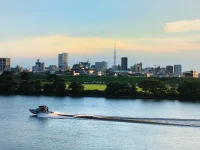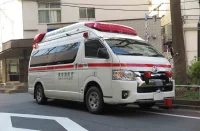Easy to understand for foreigners! The Japanese high school education system and high schools where you can study abroad
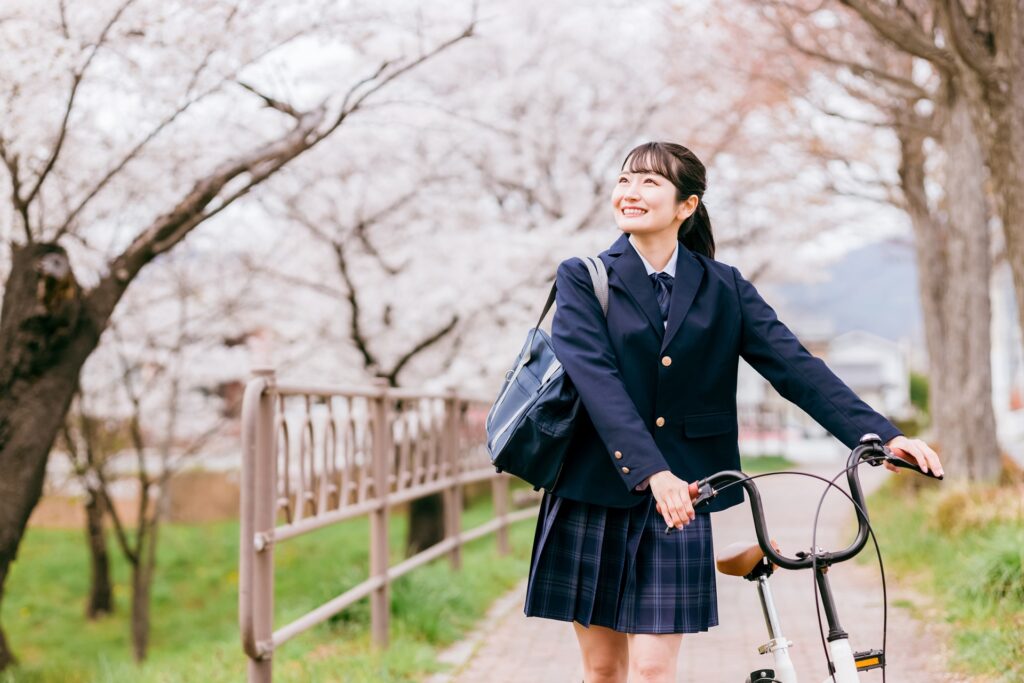
High school in Japan is the final stage of secondary education for students who have graduated from compulsory junior high school. Through high school education, students acquire the knowledge and skills needed for their future career paths and society.
This article will explain in detail the features and structure of Japanese high school education for non-Japanese students. By understanding the overall picture of Japanese high schools, you will be able to deepen your understanding of the Japanese educational system.
If you would like to learn more about the Japanese education system, we also recommend the following articles.
▶︎ How does the Japanese education system work? Explanation of types of schools, ages to attend, etc.
▼Goandup Picks Click here for recommended articles!
- Required before studying abroad! Goandup Nihongo+, an online Japanese language learning service
- This page introduces services for foreigners who wish to study in Japan or improve their Japanese language skills to learn Japanese online.
- Goandup Salon" community for foreigners living in Japan
- We introduce an online community where foreigners living in Japan can exchange information and interact with each other to support their life in Japan.
- Goandup Study" supports foreigners who want to study in Japan.
- This section introduces study abroad support services that provide comprehensive support to foreigners who wish to study in Japan, from preparation for study abroad to living in Japan.
- Where can I buy a prepaid SIM in Japan? Recommended SIM cards for foreigners are also introduced.
- How to purchase a prepaid SIM and suitable SIM cards for foreigners.
- The Complete Guide to Pocket Wi-Fi in Japan for Foreigners!
- We introduce how to select and recommend pocket Wi-Fi products that can be used conveniently in Japan.
- The Complete Guide to Finding a Job in Japan! Finding a job, changing jobs, and part-time work for foreigners
- This site provides foreigners who want to work in Japan with comprehensive information on how to find a job, recommended job sites, and other information necessary to find a job.
Basic Education System of Japanese High Schools

High school education in Japan plays an important role as a finishing touch to secondary education after completion of compulsory education, with a view to students' future career paths and success in society.
This section provides a detailed description of the basic Japanese high school education system from various perspectives, including the governing body, types of high schools, credits and graduation requirements, grade system, and schedule.
1. operating entity
Japanese high schools include both public schools such as prefectural and municipal schools and private schools. Public high schools are established and operated by local governments such as prefectures and government-designated cities. Private high schools, on the other hand, are operated by private educational institutions called school corporations, which provide distinctive education based on the founding spirit of the school. Tuition fees tend to be higher at private high schools than at public high schools, but they feature better facilities and equipment, and small class sizes and attentive guidance.
2. type of high school
High schools in Japan can be broadly classified into two types: general high schools, which provide a general education, and specialized high schools, which provide a specialized education. Regular high schools offer curricula designed to provide students with a broad range of general education. Specialty high schools, on the other hand, include technical high schools, commercial high schools, and agricultural high schools, where students can learn specialized knowledge and skills in their respective fields.
In addition to full-time high schools, there are also regular and correspondence high schools. Regular courses are offered mainly in the evening and are available to students who have daytime jobs. Correspondence courses are characterized by a learning format that combines home study and schooling (interview guidance), allowing students to study at their own pace.
3. credits and graduation requirements
In Japanese high schools, credits are assigned for each course of study; one credit is equivalent to 35 standard class hours, and the number of credits for each subject varies depending on the content and importance of the subject matter. Students are required to earn at least 74 credits over three years to graduate from high school, including 10 required subjects: Japanese, geography and history, civics, mathematics, science, health and physical education, art, foreign languages, home economics, and information. In addition, school subjects and comprehensive study time are also included in the compulsory subjects. In addition to these required subjects, each school offers elective subjects according to students' interests and career paths.
4. the academic year system
In most Japanese high schools, the academic year system is based on grades 1 through 3. The number of credits and courses to be taken in each grade are determined, and the range of subject choices expands as students move up through the grades. This academic year system differs from countries that use a credit system, such as the United States.
On the other hand, there are high schools in Japan with a flexible educational program called "credit high schools," which are not bound by grade divisions. In credit high schools, credits are assigned for each subject, and students can graduate after three years of enrollment and fulfillment of the required number of credits. Unlike most full-time high schools and regular high schools, the concept of a school year is thin, and in some cases, students spend more than four years to earn the required credits.
5. Japanese high school schedule: Explanation using a typical high school as an example
A typical day at a Japanese high school generally follows the schedule below.
| Hours. | Contents |
|---|---|
| 8:40-8:50 | homeroom |
| 9:00-9:50 | Hour 1 |
| 10:00-10:50 | 2nd period |
| 11:00-11:50 | 3rd period |
| 11:50-12:40 | lunch break |
| 12:40-13:30 | 4th period |
| 13:40~14:30 | 5th period |
| 14:40-15:30 | 6th period |
| 15:30-16:20 | Homeroom and cleaning |
| 16:20~. | club activities |
In Japanese high schools, classes generally begin with morning homeroom and continue for six hours a day. There is a 10-minute break between each class and a lunch break of 50 minutes to an hour. After school, students spend their time in a variety of ways, with some participating in club activities, others studying independently, attending preparatory schools, or working part-time jobs. However, many preparatory schools prohibit part-time work.
In addition, many high schools do not have classes on Saturdays and offer courses. These courses are mainly designed for students who wish to enter higher education, and are intended to prepare them for university entrance exams or to help them overcome weak subjects. The content and frequency of these courses vary from school to school, but they are important for students to improve their academic performance and realize their career goals.
6. how to get to and from school
Japanese high school students commute to school in a variety of ways: on foot, by bicycle, by train, or by bus. In urban areas, most students use trains and buses, while in suburban and rural areas, bicycle commuting is the norm. Each high school has a large bicycle parking lot where students register their own bicycles.
Some private high schools also operate school buses. The school buses will travel along routes and stops designated by the school to transport students to and from school. This allows parents to ensure the safety of their children and the comfort of their students as they commute to and from school.
7. the age at which students enter high school
The age for entering high school in Japan is generally between 15 and 16 years old. Under Japan's School Education Law, April 1 is the base date, and students who turn 15 on or after April 2 belong to the previous school year. In other words, students who are 15 years old as of April 1 are in the first grade of high school, and students who are 16 years old are in the second grade of high school.
However, the age may be different for children who have returned from abroad or for international students. In addition, although it is assumed that the student will pass the entrance examination, there are cases in which students are enrolled in high school at an age different from the normal age due to grade-skipping or staying in school.
8. semester
Japanese high schools generally operate on a three-semester system: the first semester runs from April to July, the second from September to December, and the third from January to March. At the end of each semester, regular examinations are held, and students study hard for the exams.
At the end of the first semester, a school festival is often held before summer vacation; at the end of the second semester, a Christmas party and ball game tournament are held before winter vacation; and at the end of the third semester, a graduation ceremony is held to send off graduates.
9. Long Vacations
Japanese high schools have three long vacations: summer vacation, winter vacation, and spring vacation. Summer vacation is from late July to the end of August, winter vacation is from late December to early January, and spring vacation is from late March to early April.
During these long vacations, students work on homework and assignments, as well as participate in various activities such as club camps, field trips, family trips, and volunteer activities. For students preparing for entrance exams, the vacations are also an important time to concentrate on studying for the exam. Some schools offer supplementary classes or special courses during long vacations.
- Spring Break: March 20 approx. to April 5 approx.
- Summer vacation: from around July 20 to September 1
- Winter break: December 25 - January 7
10. about club activities
Club activities are very active in Japanese high schools. Club activities are broadly classified into sports and cultural activities, and each high school has a variety of club activities.
Club activities take place after school, on weekends, and during long vacations, and students participate in club activities according to their own interests and concerns. Through club activities, students not only hone their specialized skills, but also learn the importance of cooperation with their peers, the value of hard work, a sense of responsibility, and many other things. Club activities also play a major role in creating memories of school life.
【 Major Departmental Activities in Japan】
- sports department (e.g. in a newspaper)
- Baseball, soccer, volleyball, basketball, tennis, track and field, rugby, badminton, etc.
- Cultural Affairs Department
- Brass band, tea ceremony, art, English, broadcasting, drama, photography, light music, etc.
Four characteristics of Japanese high schools
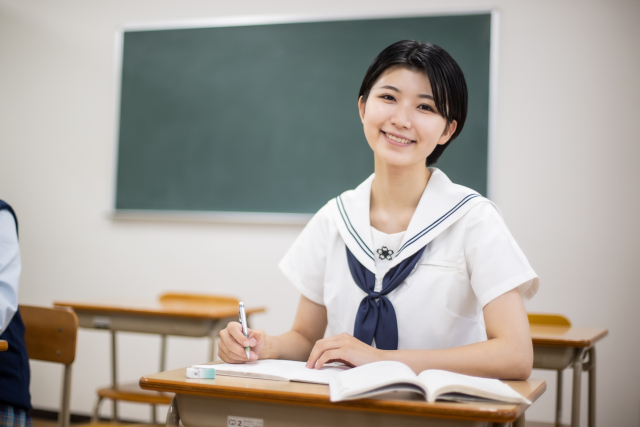
Japanese high schools have several characteristics that distinguish them from high schools in other countries. In this section, we will take a closer look at four aspects of distinctive customs and culture in Japanese high schools. We will cover cleaning customs, uniforms, school lunches, school events, and other elements essential to understanding high school life in Japan.
1. cleaning by themselves|Mainly public high schools
In Japanese high schools, especially public high schools, there is a "cleaning time" during which students themselves clean classrooms and school buildings. This custom is based on the educational goal set forth in the School Education Law, which is "to inform students of the preciousness of work through workplaces. Students not only learn cleaning skills, but also develop a sense of responsibility to keep their learning environment clean with their own hands, and a cooperative spirit fostered by working together.
On the other hand, some private high schools have professional cleaning staffs. This is done so that students can spend more time on their studies and club activities. However, many private high schools also encourage students to take part in voluntary cleaning activities.
Cleaning times vary from school to school, but are generally set for 15 to 30 minutes at the end of the day.
2. uniforms are often provided and styles are varied
Many Japanese high schools require students to wear school uniforms. Uniforms come in a variety of styles, including the gakuran, blazer, and sailor uniforms. Gakuran is a uniform for boys that combines a jacket with a stuffed collar and trousers, and is mainly used in public high schools. The blazer is a uniform combining a jacket and slacks (or skirt), and is most often seen in private high schools. Sailor uniforms are designed with a naval motif for girls and are widely adopted in both public and private schools.
The purpose of uniforms is to give students a sense of belonging and focus on school life, and wearing uniforms has the added benefit of making it harder for economic disparities between students to surface. On the other hand, there is some debate about the pros and cons of uniforms.
Recently, the number of high schools that have adopted genderless uniforms, where girls can also choose to wear slacks, is gradually increasing.
3. many schools do not offer school lunches
Many Japanese high schools do not offer school lunches. The idea behind this is that high school students should be able to choose and manage their own meals. Students in high schools without school lunches either bring their own lunch boxes or purchase lunch at the school store or cafeteria. Students who bring their own lunch boxes bring lunch boxes made at home or purchased at convenience stores or supermarkets.
On the other hand, some high schools offer school lunches. These schools support students' healthy eating habits by providing a well-balanced meal. School lunch time also provides an important opportunity to deepen communication with classmates.
4. many school events
School events occupy a very important place in Japanese high schools. Major school events include entrance ceremonies, sports festivals, cultural festivals, school trips, ball game competitions, and graduation ceremonies. These events are an essential part of students' memories of school life.
The Physical Education Festival is an event in which students are divided into classes and teams and participate in various sporting events to enhance unity and class consciousness. The Cultural Festival is an event planned and organized by the students on their own initiative, and includes a variety of cultural activities such as drama, music, dance, and exhibitions. School excursions are trips to places of interest in Japan and abroad, providing an opportunity for students to broaden their horizons and deepen their friendships.
These school events allow students to develop their planning, execution, and communication skills through their proactive involvement. In addition, through school events, students can create memories that will last a lifetime.
High schools actively accepting international students in Japan
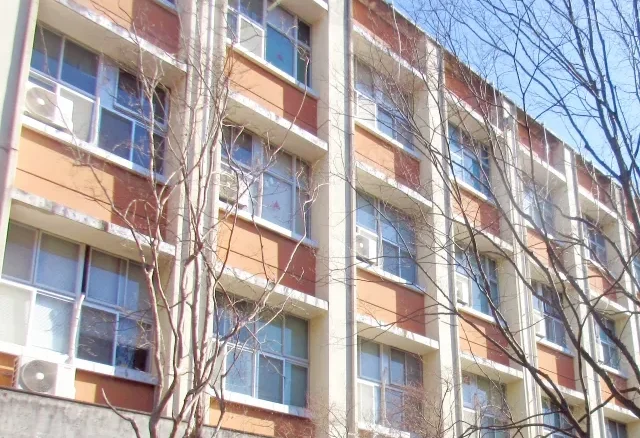
It is not an easy task for international students to enter a local school. Although the number of high schools that accept international students is limited because they require a certain level of experience and skill, we would like to finally introduce some high schools that have a system in place to accept international students so that they can study with peace of mind.
Aoba-japan international school
A total school from the age of 3 to 18 years old. This high school offers an original education based on the International Baccalaureate Program. There is an English website for foreigners.
Official website:Aoba-japan international school
◆Tokyo Metropolitan International High School
This high school is accredited by the International Baccalaureate (Diploma Program). There is an English website for foreigners.
Official website:Tokyo Metropolitan International High School
◆International Christian University High School
This high school fosters a rich international outlook with an international student body. Foreign nationals may take the general entrance examination if they meet certain requirements.
Official website:International Christian University High School
Serious employment support to help you realize your dream of working in Japan!

Do you want to work in Japan?
Let us "Goandup" make that dream a reality!
【 Program Features 】
✅ JLPT N3 level Japanese language acquisition
✅ Thorough preparation for the specific skills test
✅ Full support for job hunting in Japan
Business-focused one-on-one lessons will help you find a job in Japan in the shortest possible time.
【 Program Menu 】
- Individual Japanese language lessons
- Intensive curriculum to obtain N3, especially specialized lessons for business Japanese that can be used at work.
- Intensive curriculum to obtain N3, especially specialized lessons for business Japanese that can be used at work.
- Preparation for the Specific Skills Test
- Customized materials for specific skill tests will be used to focus on frequently asked questions and learning to pass the test.
- Customized materials for specific skill tests will be used to focus on frequently asked questions and learning to pass the test.
- Resume and CV support
- To create resumes and CVs tailored to Japanese corporate culture, and to brush up on self-promotion and motivation for application.
- To create resumes and CVs tailored to Japanese corporate culture, and to brush up on self-promotion and motivation for application.
- Interview Preparation
- Guidance on areas for improvement through mock interviews and feedback based on corporate interview scenarios. Learn interview etiquette and behavior unique to Japan.
- Guidance on areas for improvement through mock interviews and feedback based on corporate interview scenarios. Learn interview etiquette and behavior unique to Japan.
- career consulting
- Provide introductions to companies that match the participant's career goals, select companies to apply to, and provide advice on the level of knowledge required by the companies to which the participant is applying.
- Provide introductions to companies that match the participant's career goals, select companies to apply to, and provide advice on the level of knowledge required by the companies to which the participant is applying.
- Chat Support
- In addition to one-on-one individual lessons, we also accept casual questions via DM (visa application, living support, assistance in finding a room, etc.).
If you are serious about your career in Japan, join us now!
▶︎ for more informationclick here.
We will do our best to support your success in Japan!
summary
High school education in Japan is a systematic system designed to help students realize their career goals and develop social skills. Japanese high schools have their own unique characteristics, including the type of high school, the system, and daily school life. In addition, as internationalization progresses, more and more high schools are accepting international students.
Although there will be quite a gap from overseas, I believe that there are some lessons that can only be learned in Japan. I believe that having multinational students learn together is a very valuable experience for the generation that will be responsible for the world in the future.
When a foreigner enters a Japanese high school, it is important to understand the characteristics of each school and choose the school that best suits his or her needs.
Your support will help us!
Thank you for visiting Goandup Picks. Our mission is to provide you with more useful information to show the world what Japan has to offer.
Your support will help us to further enhance our activities, so please support us!



